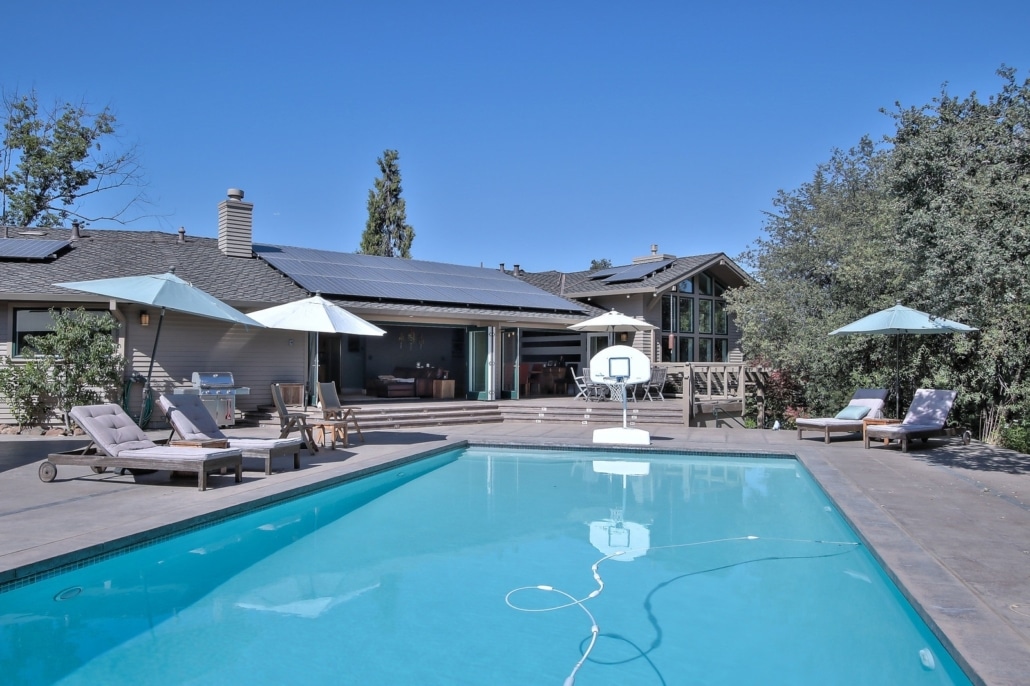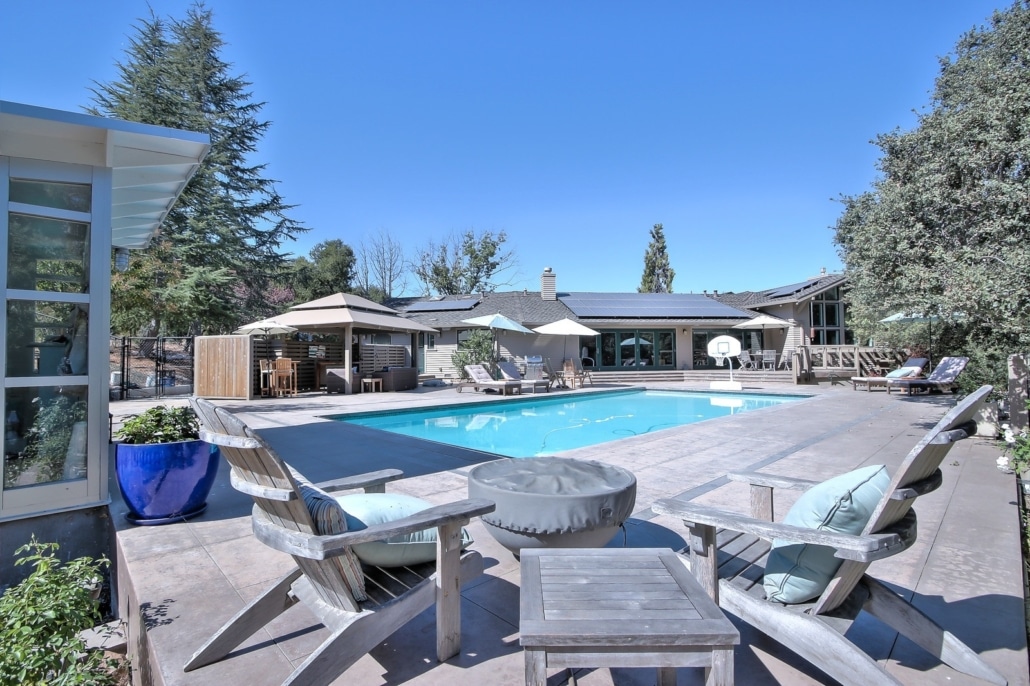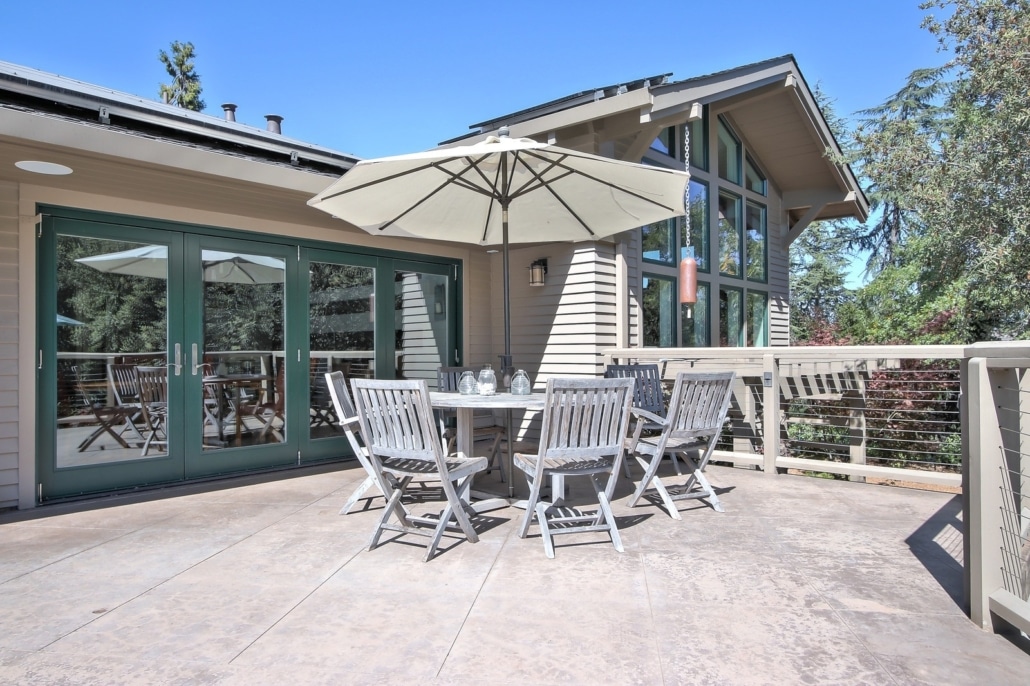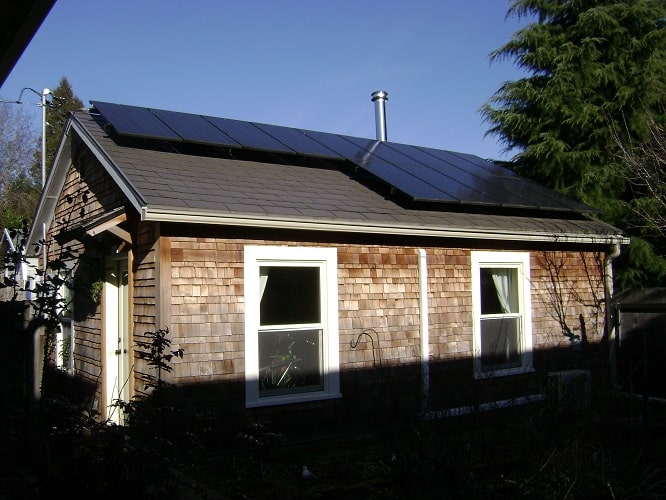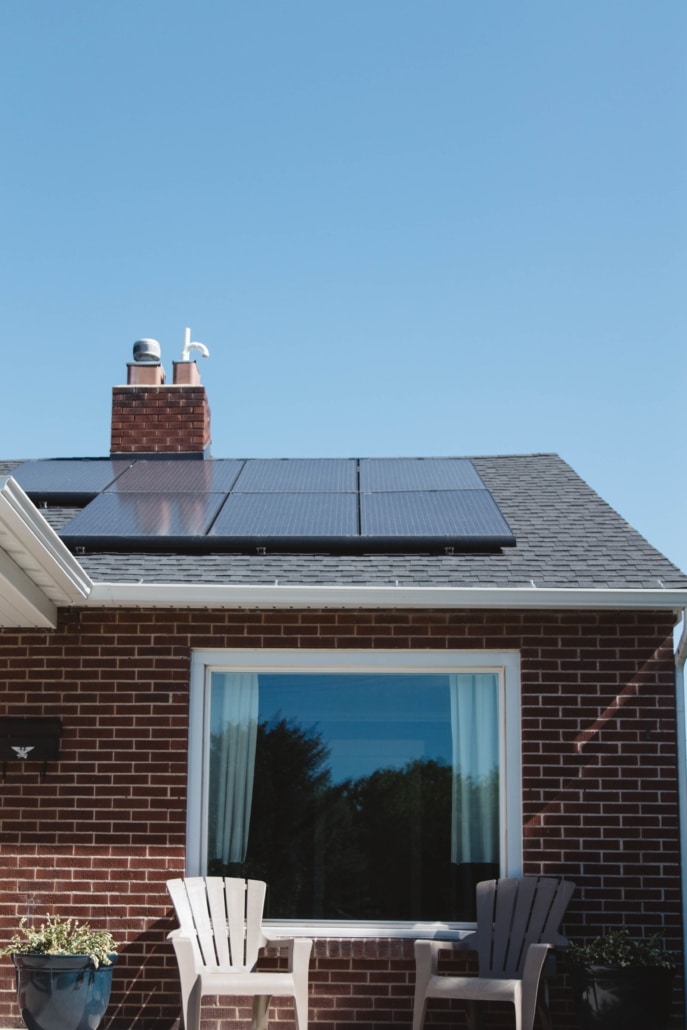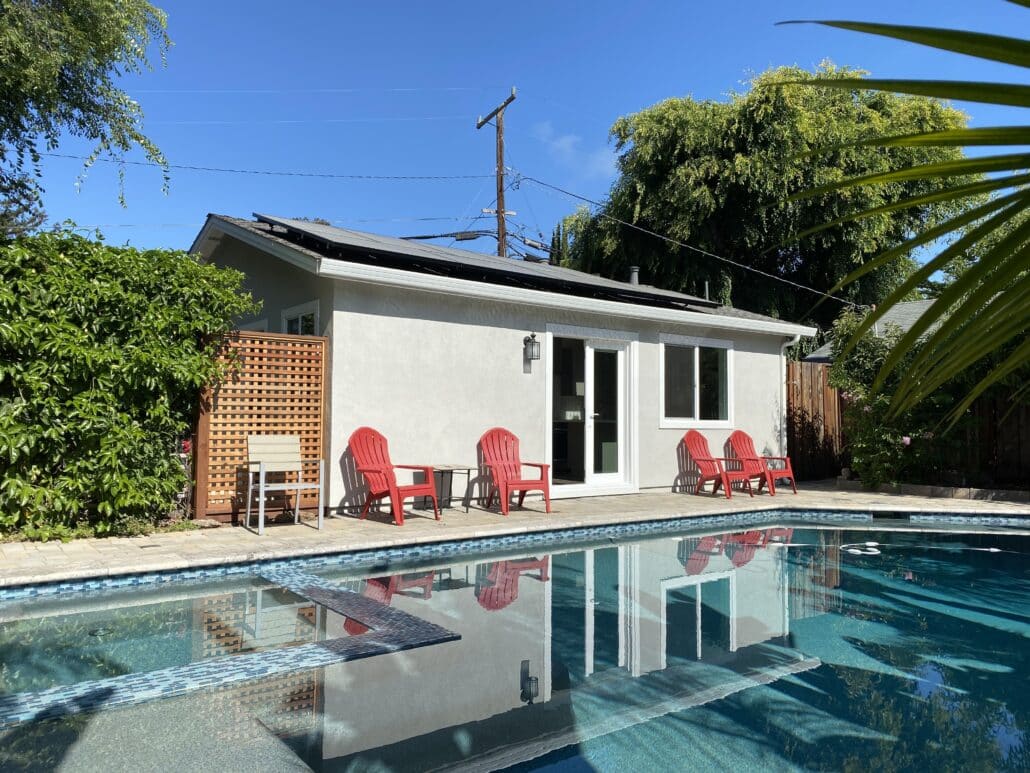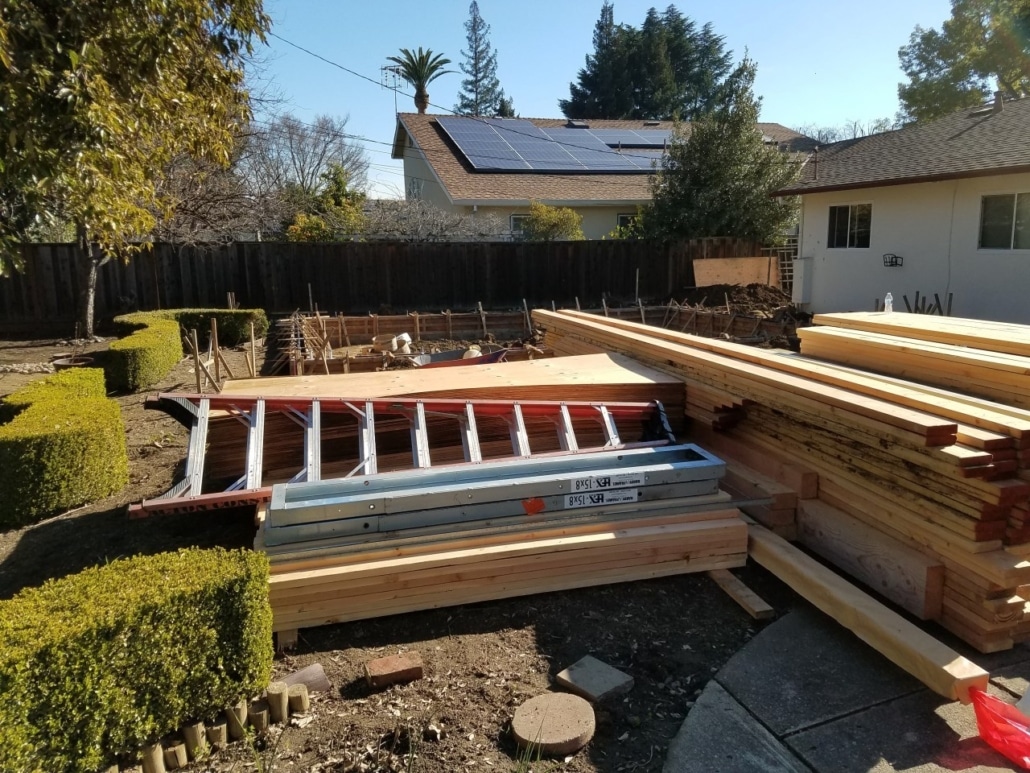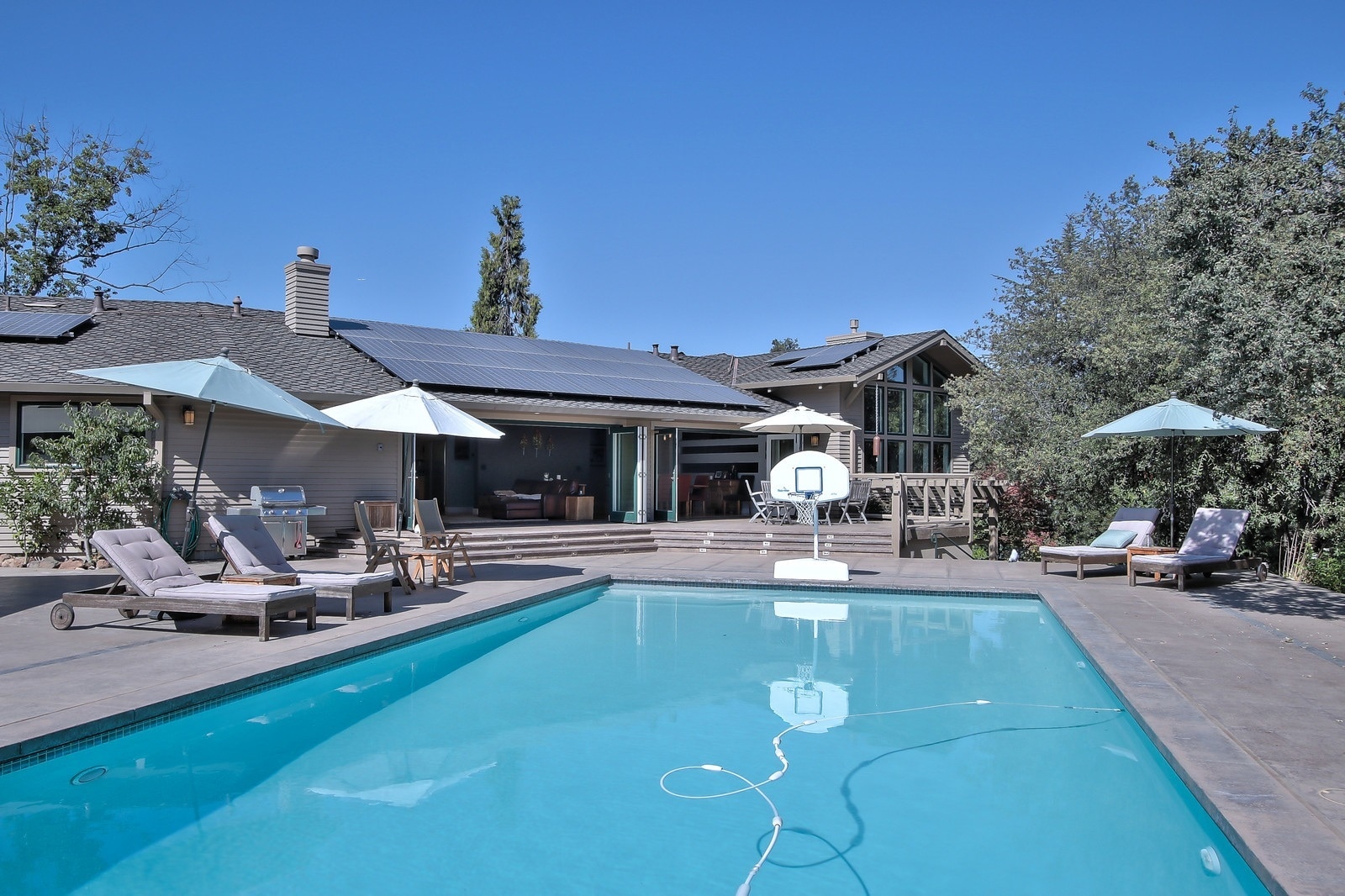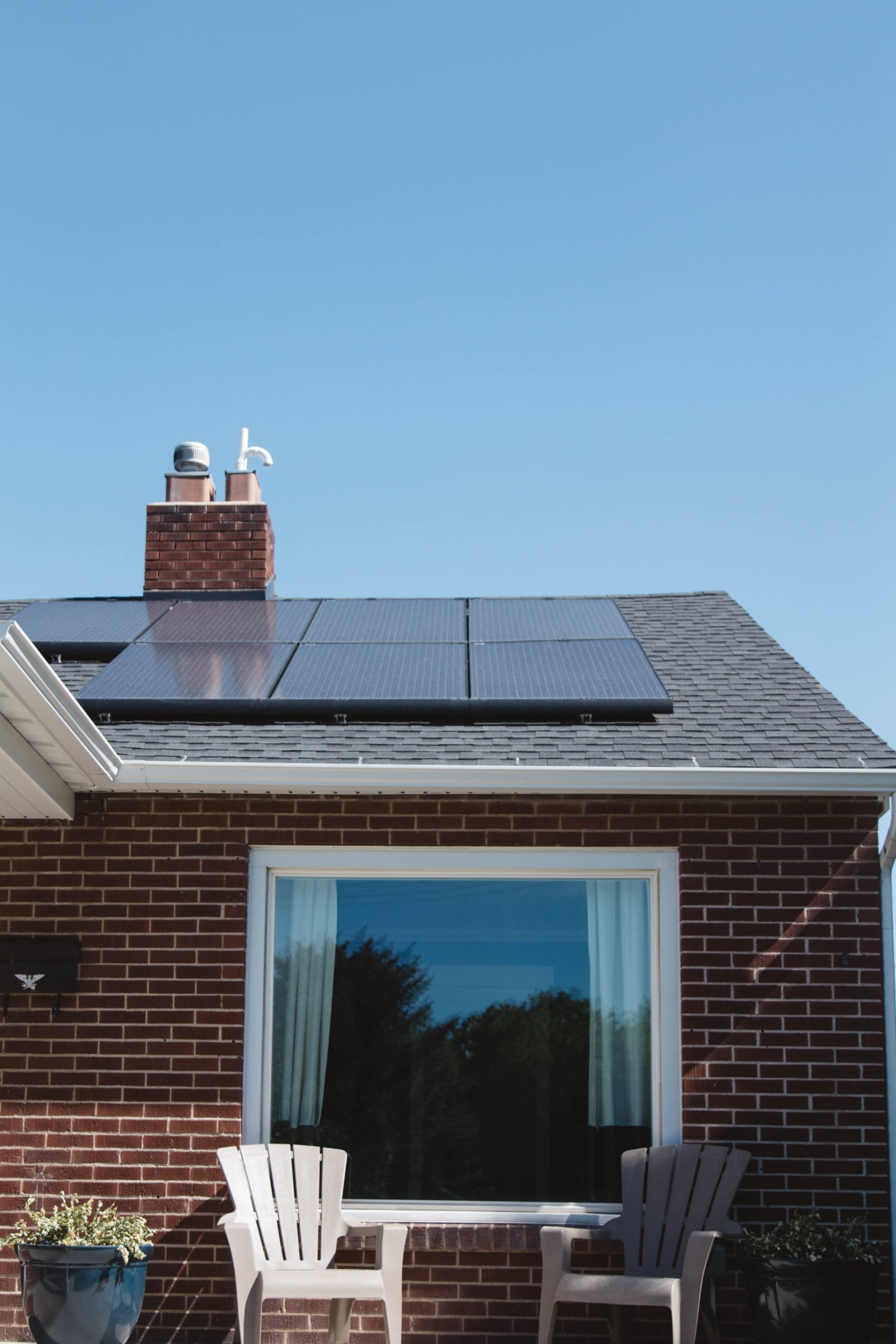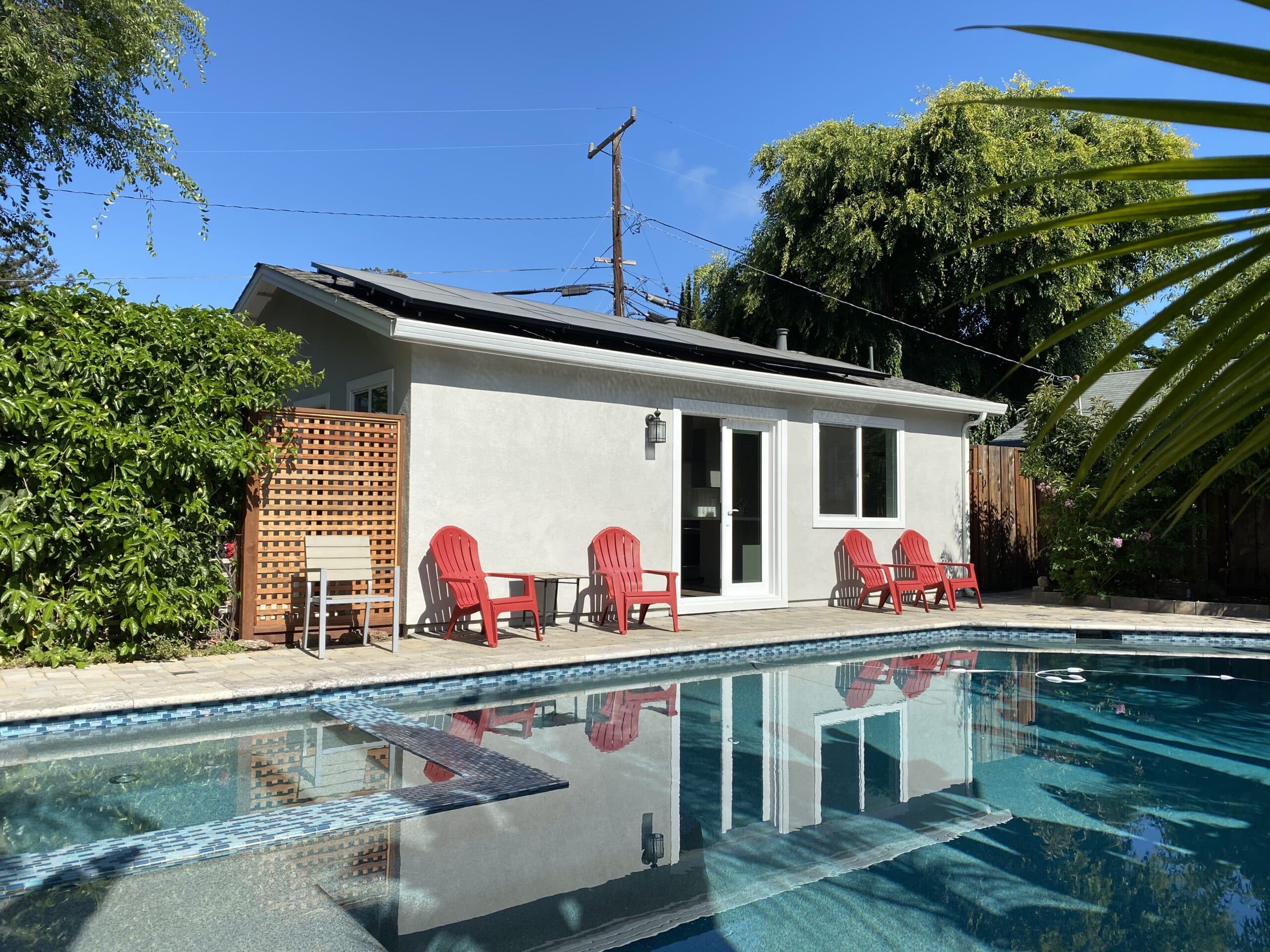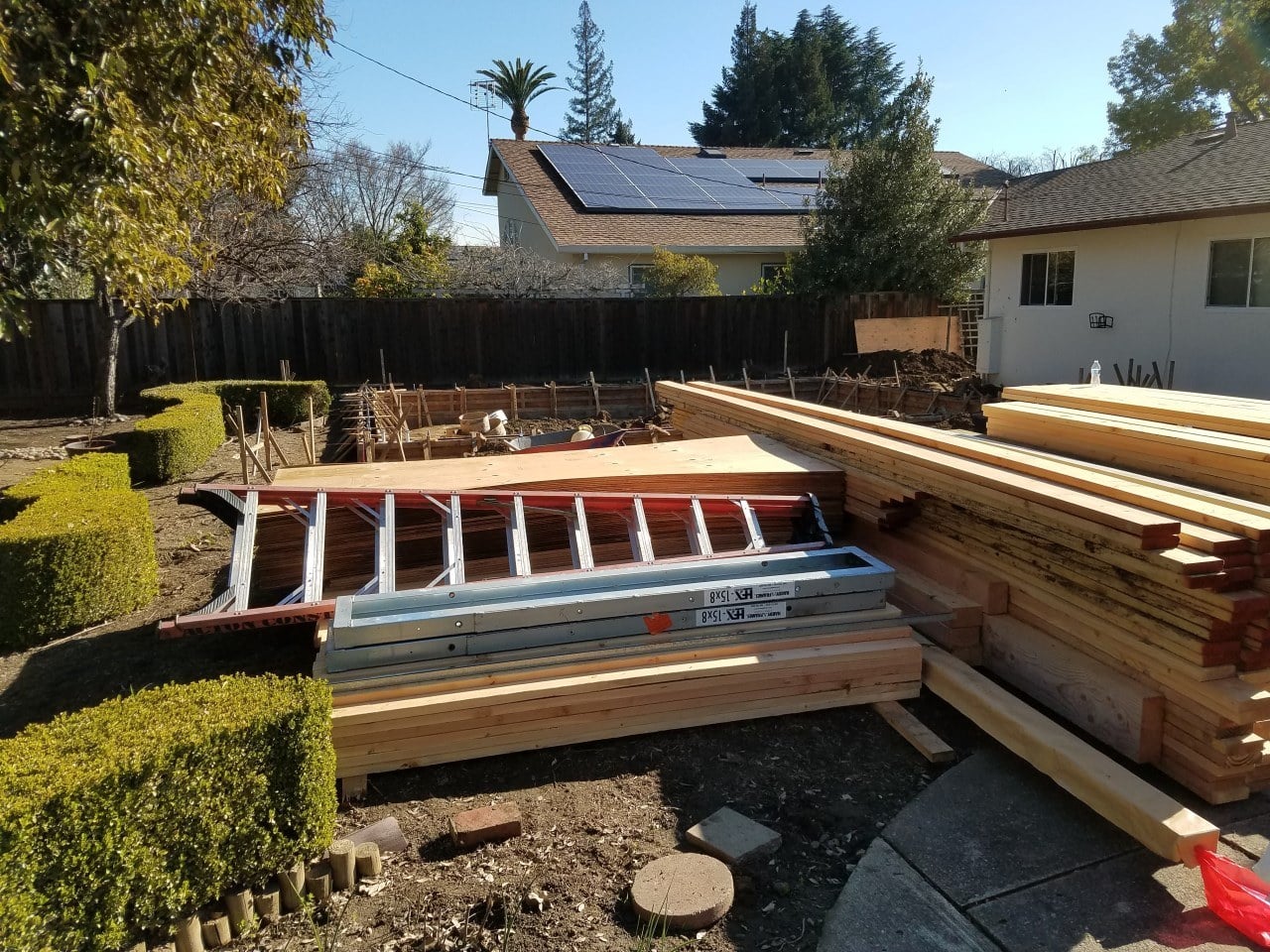The Future is Bright: 5 Reasons to Invest in a Solar-Powered ADU
As the world shifts towards more sustainable living practices, many homeowners are exploring innovative ways to reduce their environmental footprint and energy costs. Accessory Dwelling Units (ADUs) have emerged as a popular solution for expanding living space on single family properties without the need for extensive remodels or buying a new home.
Combining the compact efficiency of ADUs with the renewable energy of solar power creates a compelling proposition for modern living. Solar-powered ADUs offer a unique blend of functionality and sustainability, making them an attractive option for those looking to embrace green living while saving money on energy.
This blog post will delve into the myriad benefits of solar-powered ADUs, from their environmental impact to the financial savings they offer, and guide you through the essentials of planning, building, and optimizing your solar-powered living space. Join us as we explore how these eco-friendly dwellings are paving the way for a more sustainable future, one home at a time.
Key Components of a Solar-Powered ADU
When it comes to constructing a solar-powered Accessory Dwelling Unit (ADU), understanding the essential components can make all the difference in efficiency, sustainability, and comfort. Let’s delve into the critical elements that form the backbone of a solar-powered ADU: solar panels, battery storage systems, and energy-efficient appliances and systems.
Solar Panels: Types and How They Work
Solar panels are at the heart of any solar-powered ADU, capturing sunlight and converting it into electricity. There are mainly three types of solar panels used in residential settings:
- Monocrystalline Solar Panels: Known for their high efficiency and sleek appearance, these panels are made from a single, continuous crystal structure. They are more efficient in converting sunlight into electricity and perform better in low-light conditions compared to their counterparts, making them a popular choice despite their higher price point.
- Polycrystalline Solar Panels: These panels are recognized by their blue hue and are made from multiple crystal fragments melted together. While they have a slightly lower efficiency rate and are less expensive than monocrystalline panels, polycrystalline solar panels still offer a reliable and cost-effective solution for ADUs.
- Thin-Film Solar Panels: Offering a flexible design, these panels can be applied to a variety of surfaces and are the least expensive of the three types. However, they also have the lowest efficiency and may require more space to generate the same amount of power as crystalline panels.
Solar panels work by absorbing photons from sunlight, which then generate an electric current through the photovoltaic effect. This current is directed to an inverter, converting the direct current (DC) into alternating current (AC) electricity that can be used to power the ADU.
Battery Storage Systems
Battery storage systems can play a crucial role in maximizing the utility of solar panels. They store excess electricity produced during the day for use during the night or on cloudy days, ensuring a consistent power supply. These systems are especially useful in ADUs or in areas with frequent power outages, providing energy independence and security. Modern battery systems are compact, efficient, and increasingly affordable, making them an integral part of solar-powered ADUs.
Energy-Efficient Appliances and Systems
To complement the solar panels and battery storage, energy-efficient appliances and systems are essential in reducing overall energy consumption. This includes LED lighting, ENERGY STAR-rated appliances, high-efficiency heating and cooling systems, and smart home technology that can monitor and control energy use. These appliances require less electricity to operate, thereby reducing the load on your solar power system and extending the life of your battery storage.
By integrating these key components—solar panels, battery storage systems, and energy-efficient appliances and systems—you can create a highly efficient, sustainable, and comfortable living space in your solar-powered ADU. Together, they form a cohesive system that not only saves on energy costs but also contributes to a greener planet.
Reason 1: Cost Efficiency of Solar-Powered ADUs in the Bay Area
Incorporating solar energy into your ADU in the Bay Area not only aligns with the region’s environmental ethos but also offers a financially savvy way to capitalize on one of its most abundant resources: sunlight. With the combination of immediate savings on electricity bills, the long-term payoff of your initial investment, and the potential to earn credits through net metering, the cost efficiency of solar-powered ADUs is a compelling reason to consider this sustainable living solution.
Slash Your Electricity Bills with Solar
Solar-powered ADUs stand as a beacon of cost efficiency, particularly in the sun-drenched Bay Area. By harnessing the abundant solar energy, homeowners can significantly reduce, if not completely eliminate, their monthly electricity bills. Solar panels convert sunlight into electricity, directly powering your ADU and main residence, which means less reliance on the grid and lower energy costs.
In a region where sunshine is plentiful and electricity rates are among the highest in the country, the savings potential is substantial.
Upfront Investment Pays Off
The initial setup cost of solar panels and related systems for your ADU might seem steep, but when viewed through the lens of long-term savings, it’s an investment that pays dividends. In the Bay Area, solar installations can yield savings on energy bills that, over time, surpass the upfront cost. Moreover, solar panels have a lifespan of 25-30 years, which means you can enjoy decades of reduced energy expenses. The break-even point varies, but many homeowners find that the system pays for itself in just a few years, thanks to the considerable savings on utility bills.
Earn Credits with Net Metering
The Bay Area’s supportive policies for solar energy include net metering, a system that credits solar energy system owners for the electricity they add to the grid. If your solar-powered ADU produces more electricity than it consumes, the excess power is fed back into the grid, and you receive credits from your utility company.
These credits can offset the cost of electricity drawn from the grid when your system is under-producing, such as during nighttime or on very cloudy days. Essentially, net metering can turn your solar-powered ADU into a mini power plant, further enhancing its cost efficiency and even potentially leading to negative utility bills.
Reason 2: Powering a Greener Tomorrow
Solar-powered Accessory Dwelling Units (ADUs) offer a tangible solution to homeowners looking to reduce their environmental impact. By opting for solar energy, ADUs in urban and suburban landscapes become part of a cleaner, more sustainable future.
Solar panels on ADUs convert sunlight directly into electricity without emitting greenhouse gasses, drastically reducing the carbon footprint of your home. In areas like the Bay Area, where environmental consciousness runs deep, the shift towards solar-powered living spaces is not just a trend but a commitment to preserving our planet for future generations. Unlike traditional energy sources that rely heavily on burning fossil fuels, solar energy provides a clean, renewable source of power that significantly lessens the demand on non-renewable resources and reduces emissions of harmful pollutants.
In essence, the environmental impact of choosing a solar-powered ADU extends beyond the immediate surroundings, contributing to a global effort to embrace renewable energy, combat climate change, and protect our natural environment. By making this eco-friendly choice, homeowners can take pride in their direct contribution to a more sustainable and resilient future.
Reason 3: Increased Property Value with Solar-Powered ADUs
Adding a solar-powered ADU is a strategic move that benefits homeowners in multiple ways. It’s not just an investment in sustainable living – it’s a savvy real estate decision that increases property value, meets the demand for eco-friendly housing, and ensures your home remains attractive and relevant in a competitive market. As awareness and appreciation for sustainable living continue to grow, the value of solar-powered ADUs in the Bay Area and beyond is only set to rise, making now an opportune time to consider this enriching addition to your home.
A Smart Investment for Your Home Value
Investing in a solar-powered ADU goes beyond just saving on energy bills and reducing environmental impact—it significantly boosts your property’s market value. Numerous studies and real estate statistics have consistently shown that homes with solar installations sell for more than those without.
For instance, a comprehensive analysis by the Lawrence Berkeley National Laboratory found that buyers were willing to pay a premium of approximately $15,000 for a home with an average-sized solar photovoltaic system. The Bay Area, known for its eco-conscious residents and high energy costs, sees even greater increases in property values, as sustainable features are highly sought after by homebuyers.
Installing solar energy systems not only boosts a home’s market value but also speeds up its sale process. According to the U.S. Department of Energy, homes with solar panels sell more quickly than those without such energy-efficient features.
By adding a solar-powered ADU, homeowners not only contribute to a greener planet but also make a lucrative investment that enhances their property’s appeal and worth.
Meeting the Demand for Sustainable Living
Today’s homebuyers are increasingly looking for properties that align with their values, particularly when it comes to sustainability. A solar-powered ADU meets this demand head-on, offering an energy-efficient living solution that attracts a growing segment of the market.
These eco-friendly units appeal especially to environmentally conscious buyers who prioritize green living practices and long-term savings on utility costs. In the Bay Area, where sustainability is a significant part of the community ethos, properties with solar-powered ADUs stand out in the real estate market, drawing more interest and commanding higher prices.
Reason 4: The Path to Energy Independence
By embracing solar energy and the autonomy it brings, homeowners can enjoy the peace of mind that comes with a secure, self-sufficient power supply, making a solar-powered ADU an investment in both the present and the future.
Cutting the Cord: Less Reliance on the Grid
Opting for a solar-powered Accessory Dwelling Unit (ADU) signifies a major step towards energy independence. This self-sufficiency is especially appealing in today’s world, where energy costs and sustainability concerns are on the rise.
By generating your own electricity, you’re not just reducing your monthly utility bills; you’re also lessening your dependency on the often unpredictable, and sometimes unreliable, energy grid.
This independence is particularly valuable in areas prone to power outages or in regions with high electricity rates. In essence, solar-powered ADUs offer homeowners control over their energy source, ensuring a more stable and predictable energy cost over time.
Uninterrupted Power: Solar Energy’s Role During Outages
One of the most tangible benefits of solar power, especially when paired with battery storage, is the assurance of an uninterrupted electricity supply—even during grid outages. Solar panels continue to harvest sunlight and generate power during the day, while battery storage systems store excess energy for use at night or during overcast conditions.
This setup is invaluable during power outages, providing essential electricity to your ADU when the rest of the neighborhood might be in the dark. Whether it’s a natural disaster or routine grid maintenance, solar-powered ADUs stand resilient, offering comfort and security in times of need.
Reason 5: Leveraging Government Incentives for Solar-Powered ADUs
California offers a variety of solar incentives and rebates that make installing a solar-powered system in your ADU more affordable and attractive. Here’s a breakdown of the key incentives available:
- Federal Investment Tax Credit (ITC): You can reduce your federal tax liability by 30% of the total installation cost of your solar system. This significant savings is available until 2032, after which it will decrease to 26% in 2033 and 22% in 2034. The ITC allows for a rollover of unused credits to the next tax year, enhancing its value.
- Net Energy Metering (NEM): California’s NEM program credits solar system owners for the surplus energy their system generates and feeds back into the grid. Despite recent changes under NEM 3.0, which offer less generous benefits than before, adding a battery system can maximize your savings and potentially erase your utility bill.
- Self-Generation Incentive Program (SGIP): This California program offers rebates for installing solar systems with battery storage, with the rebate amount depending on your utility provider. It’s designed to encourage the addition of storage solutions to solar installations, providing financial benefits for doing so.
- Property Tax Exclusion for Solar Energy Systems: In California, installing a solar system won’t result in a higher property tax bill, thanks to a state provision that excludes solar installations from property tax assessments. This exclusion is currently extended through January 1, 2025.
- Local Solar Incentives: Various local incentives, such as rebates and discounted pricing, are also available in many areas of California. These can vary by location but often provide additional financial benefits to solar system installations.
Navigating the Application Process
While the availability of solar incentives is widespread, navigating the application process for these rebates and tax credits can be daunting. Here are a few tips to help streamline the process:
- Research Thoroughly: Start by researching the specific incentives available in your area. The Database of State Incentives for Renewables & Efficiency (DSIRE) is a comprehensive resource for finding information on incentives and policies that support renewables in the United States.
- Understand the Requirements: Each incentive program has its own set of eligibility requirements and application procedures. Make sure you understand these details to ensure that you qualify and that you’re applying correctly.
- Keep Good Records: Documentation is key when applying for incentives. Keep detailed records of your solar installation process, including contracts, receipts, and any communications with your installer.
- Seek Professional Advice: Consider consulting with a tax professional, a solar energy consultant or a trusted local solar-powered ADU builder. They can provide valuable insight and assistance in maximizing your benefits from these programs.
Trust in Acton ADU for Solar-Powered Efficiency
Embrace the future with Acton ADU, your trusted partner in the solar-powered ADU space. Our approach marries practical design with renewable energy, offering you a living space that’s both beautiful and environmentally responsible. We focus on delivering tailor-made solutions that align with your lifestyle needs while capitalizing on solar efficiency to enhance your home’s value and reduce energy costs.
At Acton ADU, we pride ourselves on our commitment to excellence, sustainability, and customer satisfaction. Our team is dedicated to guiding you through every step of the process, ensuring a seamless transition to solar-powered living. With Acton ADU, you’re not just building an ADU; you’re investing in a greener future and a smarter way to live.



